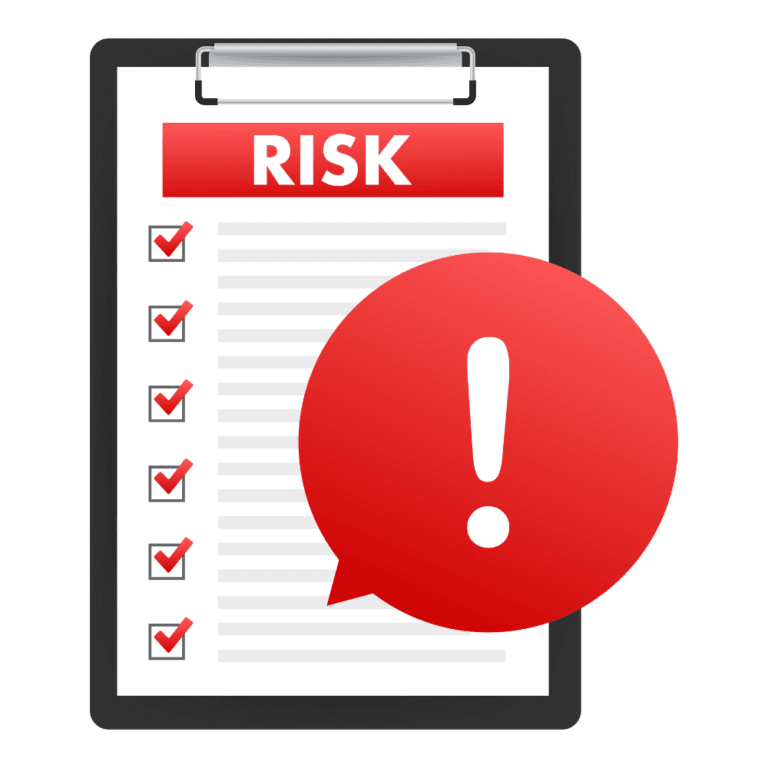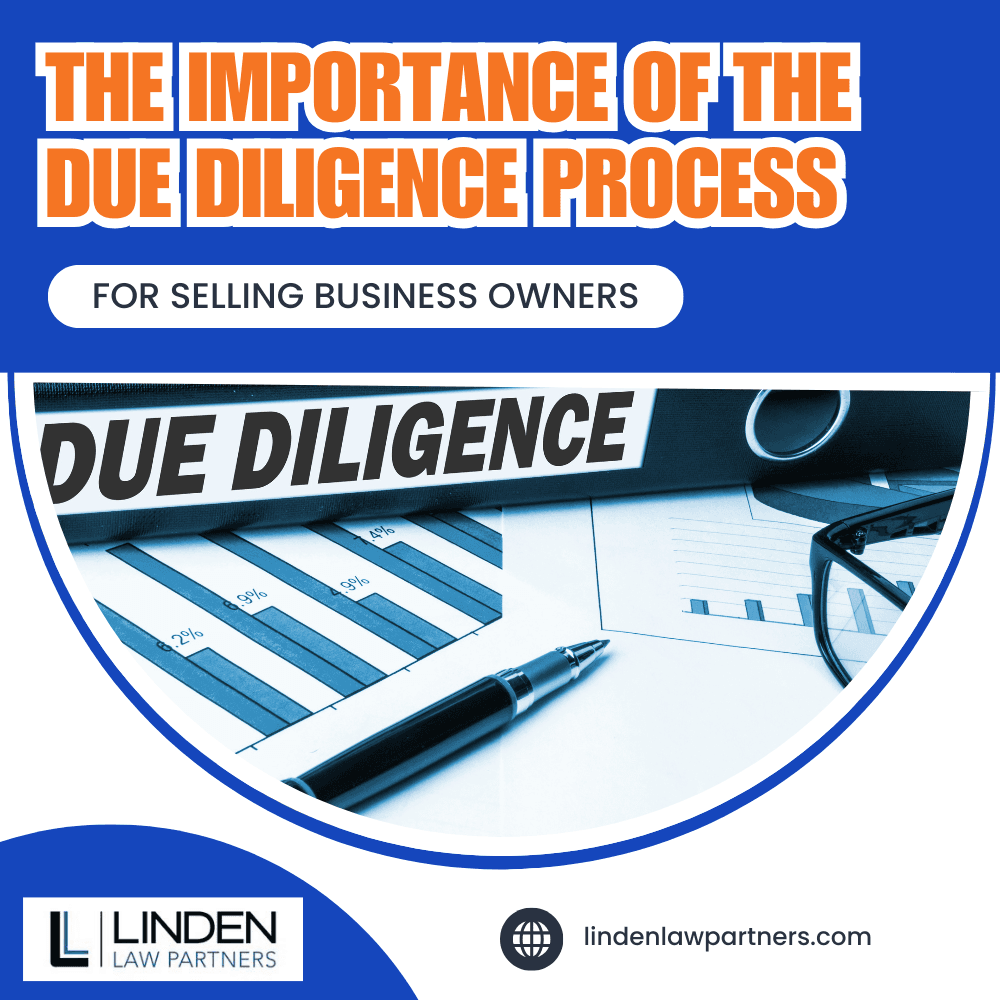Introduction
Selling a business is both a culmination of your hard work and a critical financial decision. For business owners, particularly those targeting private equity or institutional buyers, the due diligence process is not just a formality—it’s a pivotal stage that can influence deal success, speed, and valuation. Proactively preparing for due diligence helps you demonstrate credibility, resolve potential concerns, and negotiate with confidence.
If you’re preparing to sell your business, Linden Law Partners can guide you through the complexities of due diligence to help ensure an efficient and successful transaction.
- Reverse Due Diligence: Setting the Stage for Success
- Key Areas of Acquirer Due Diligence
- Preparing for Due Diligence by Category
- Building the Right Team for Due Diligence
- Common Red Flags That Derail Deals
- Enhancing Market Appeal
- Practical Steps for Due Diligence Readiness
- Benefits of Being Due Diligence Ready
- Why Selling to Private Equity or Institutional Buyers Requires Extra Preparation
1. Reverse Due Diligence: Setting the Stage for Success
What Is Reverse Due Diligence?
Reverse due diligence is the proactive process of examining your business as if you were the buyer. It involves a comprehensive review of operations, financials, legal agreements, and organizational structures to identify weaknesses and resolve them before buyers scrutinize your company.

Why It Matters
- Builds Buyer Trust: Transparency fosters confidence in the transaction.
- Minimizes Surprises: Identifying and addressing red flags in advance reduces disruptions during negotiations.
- Streamlines the Sale: A prepared business accelerates the due diligence timeline, enhancing the buyer experience.
For instance, cleaning up financial inconsistencies or resolving outdated contracts can drastically improve buyer perceptions and negotiation outcomes.
2. Key Areas of Acquirer Due Diligence
Buyers typically focus on several critical aspects when evaluating a business. Here’s a closer look at what they’ll analyze:
- Systems & Operations: Can the business operate efficiently without the seller? Well-documented workflows and processes signal continuity and scalability.
- Market Position & Growth Potential: How strong is your competitive positioning? Buyers assess market share, customer retention, and opportunities for growth.
- Financial & Tax Compliance: Transparent and accurate financial records are dealmakers. Expect buyers to scrutinize cash flow and financial statements (at a “Quality of Earnings” level, tax filings, historical earnings, and remodeled financials showing growth potential.
- Talent & Team Dynamics: A well-aligned team with clear roles and a retention plan is critical for seamless transitions.
- Legal and Organizational Structure: Clean and transferable legal agreements and intellectual property protections prevent post-sale complications.
3. Preparing for Due Diligence by Category
A. Systems & Operations
Start by mapping workflows and creating detailed documentation for business systems. This ensures buyers can clearly see how operations will continue post-acquisition.
B. Market Analysis
Analyze your market position, customer base, and supplier relationships. Highlight strong retention metrics, diverse suppliers, and contracts that secure stability.
C. Financial and Tax Readiness
D. Legal and Compliance
4. Building the Right Team for Due Diligence
Navigating due diligence requires an experienced team that can handle the nuances of M&A deals. Consider the following key roles:
- Legal Advisors: Ensure compliance, resolve legal ambiguities, and handle contractual transitions.
- Financial Experts: Provide accurate valuations, manage tax strategies, and prepare Q of E reports.
- Operational Consultants: Tackle scalability concerns and improve systems efficiency.
Advisors with “scar tissue”—experience from tough deals—can anticipate challenges and develop strategies to overcome them.
5. Common Red Flags That Derail Deals

Unaddressed issues can erode buyer confidence and jeopardize deals. cinclude:
- Financial Inconsistencies: Inaccurate financial records or unexplained variances.
- Non-Transferable Agreements: Vendor or customer contracts that don’t transfer automatically.
- Hidden Liabilities: Environmental, tax, or legal obligations lurking beneath the surface.
- Customer Retention Metrics: Overstated or misleading data regarding customer loyalty.
Proactively resolving these issues ensures smoother negotiations and avoids last-minute price reductions.
6. Enhancing Market Appeal
- Formalizing governance and decision-making structures.
- Reviewing and optimizing key contracts for transferability.
- Securing intellectual property and industry-specific permits to safeguard compliance.
7. Practical Steps for Due Diligence Readiness
A. Documentation
Organize legal, financial, and operational records into a centralized and easily accessible format.
B. Management Retention
Secure commitments from key leaders to reassure buyers of operational stability post-sale.
C. Tax and Compliance
Ensure all tax filings are accurate, up-to-date, and aligned with buyer expectations.
D. Employee Agreements
Clarify roles and enforceability of employee contracts to minimize disruptions.
8. Benefits of Being Due Diligence Ready
- Faster Timelines: A prepared seller accelerates the deal process.
- Higher Valuations: Mitigating risks upfront leads to better offers.
- Reduced Price Adjustments: Comprehensive preparation minimizes buyer concerns.
- Negotiating Leverage: A well-organized business puts sellers in a stronger bargaining position.
9. Why Selling to Private Equity or Institutional Buyers Requires Extra Preparation
Private equity and institutional buyers bring higher expectations, emphasizing scalability, data transparency, and compliance. Sellers must present polished financials, growth-ready operations, and transfer-ready contracts to meet these rigorous demands.
Conclusion
Need guidance for your business sale?
Contact Linden Law Partners to navigate the due diligence process with speciality precision and confidence.




